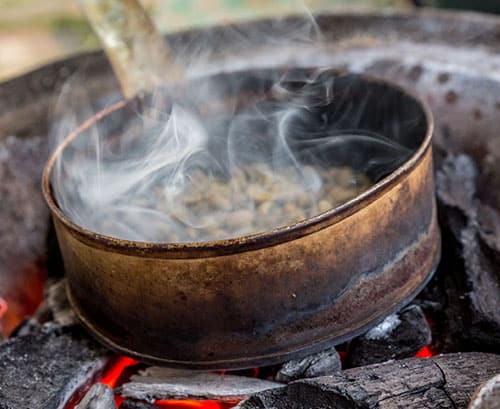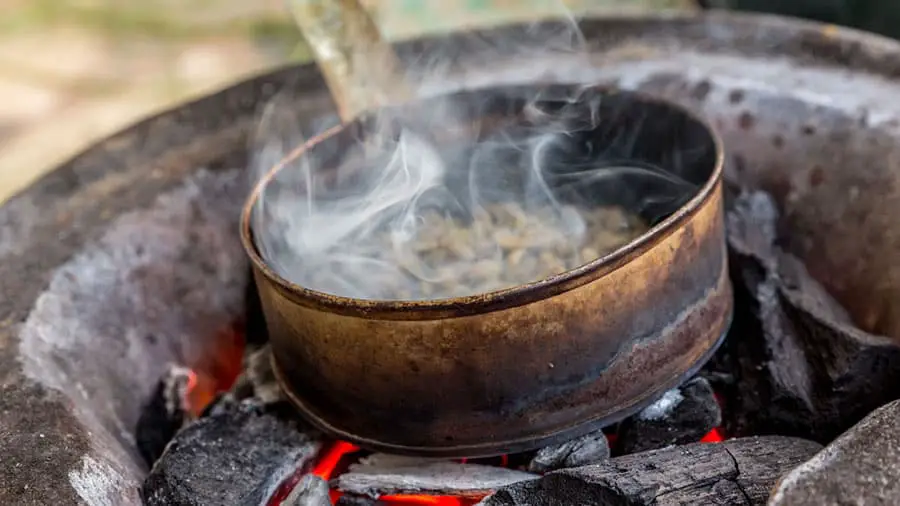
Waking up to find your coffee maker broken—or realizing you’re camping without one—can feel like a crisis. But you don’t need a fancy machine to brew a solid cup of coffee. People have been making coffee for centuries with just basic tools, and you can too.
Whether you’re at home, on a road trip, or out in the wilderness, these eight methods will keep your caffeine fix within reach. Each uses simple items you likely have on hand, like a saucepan, a cloth, or even a microwave. Let’s get into it.
Why Brew Coffee Without a Machine?
Before we jump into the methods, let’s talk about why you might need to brew coffee without a coffee maker. Maybe your machine died, you’re traveling, or you’re camping with minimal gear. Whatever the reason, these methods are practical and versatile. They also let you experiment with brewing styles, from bold Turkish coffee to smooth cold brew. Plus, they’re a fun way to channel your inner cowboy or barista without breaking the bank.
What You’ll Need (Generally)
Most methods require a few basics:
- Ground coffee: Freshly roasted beans, ground to the right consistency for the method (coarse for French press-style, fine for Turkish).
- Water: Ideally filtered, heated to 195–205°F (just off a boil) for hot brewing.
- Heat source: Stove, campfire, kettle, or microwave.
- Container: Mug, saucepan, pot, or jar.
- Optional: Filters, cloth, or a strainer to separate grounds.
Now, let’s break down the eight methods, each with clear steps and tips to avoid common pitfalls.
1. The Coffee Bag Method
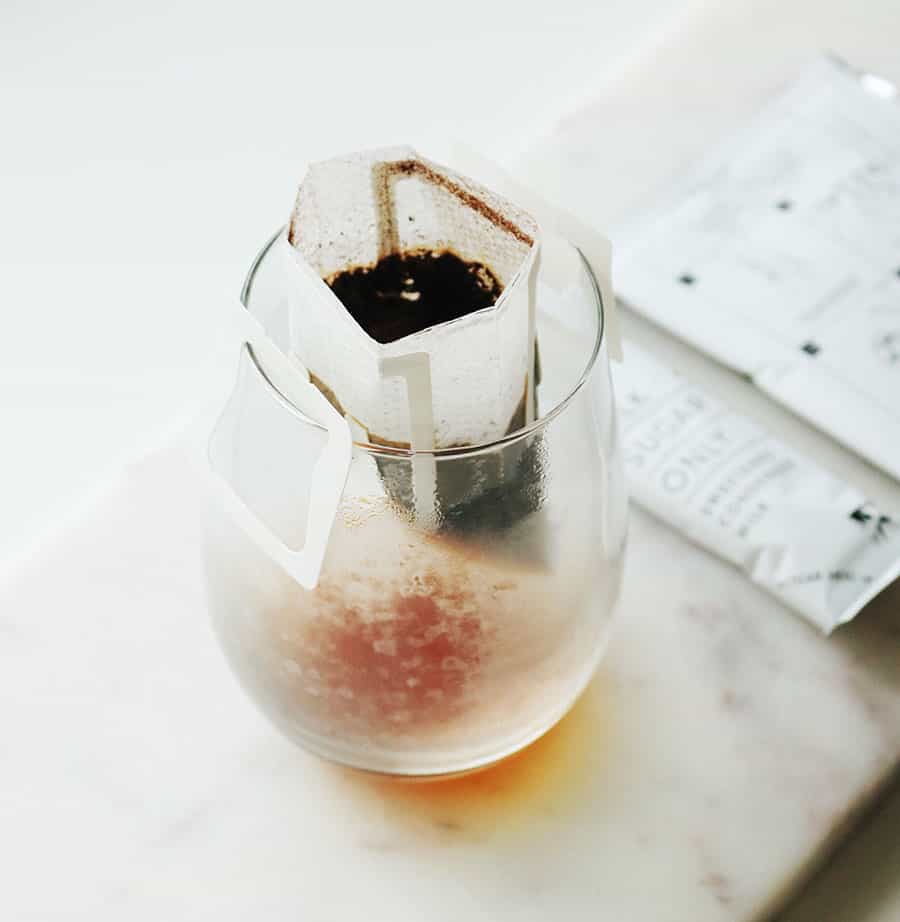
This method is like making tea but with coffee. You create a pouch using a coffee filter or cloth, steep it in hot water, and pull it out when done. It’s simple, portable, and great for single servings.
What You’ll Need
- Coffee grounds (medium-fine grind, 1–2 tbsp per 6 oz water)
- Coffee filter or cheesecloth
- String (unwaxed, food-safe)
- Mug
- Hot water (195–205°F)
- Kettle or microwave to heat water
How to Make It
- Scoop 1–2 tablespoons of coffee grounds into the center of a coffee filter or cheesecloth.
- Gather the edges to form a pouch and tie it tightly with string, leaving a long tail to hang over the mug’s edge (like a tea bag).
- Heat water to just below boiling (about 30 seconds off a boil).
- Place the coffee bag in your mug and slowly pour hot water over it until the mug is nearly full.
- Let it steep for 3–4 minutes for medium strength (adjust for weaker or stronger).
- Remove the bag using the string and enjoy.
Tips
- Use a fresh filter or clean cloth to avoid off-flavors.
- If the coffee tastes weak, steep longer or use more grounds.
- This method works best for one cup but can be scaled up with multiple bags.
2. The Strainer Method
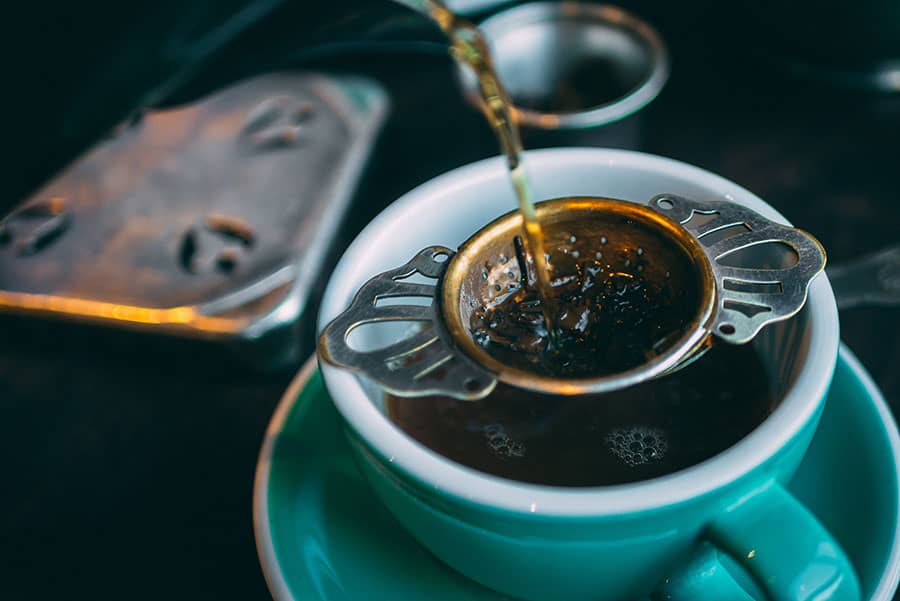
If you have a fine-mesh strainer, this method mimics pour-over coffee without a dedicated brewer. It’s efficient and keeps most grounds out of your cup.
What You’ll Need
- Coffee grounds (medium grind, 2 tbsp per 6 oz water)
- Saucepan or kettle
- Fine-mesh strainer (double-layer mesh is ideal)
- Mug
- Hot water
How to Make It
Tips
- Pour 6–8 ounces of water per serving into a saucepan or kettle and bring to a boil.
- Add 2 tablespoons of coffee grounds per 6 ounces of water and stir.
- Boil for 2 minutes, stirring occasionally to prevent grounds from sticking.
- Remove from heat and let sit for 1–2 minutes.
- Hold the strainer over your mug and slowly pour the coffee through it, catching the grounds.
- Serve and enjoy.
- A double-layer mesh strainer works best to catch fine grounds.
- If you don’t have a strainer, a cheesecloth can substitute.
- Pour slowly to avoid splashing or clogging the strainer.
3. The Saucepan Method
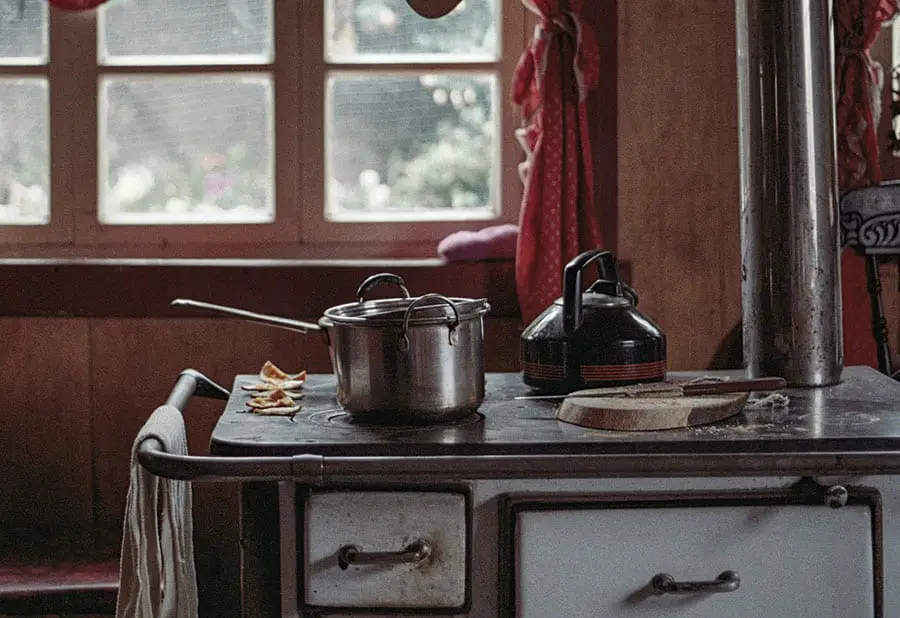
This is a no-fuss way to brew coffee using just a saucepan. It’s similar to the strainer method but skips the filter, so you’ll need to let the grounds settle.
What You’ll Need
- Coffee grounds (medium grind, 2 tbsp per 6 oz water)
- Small saucepan
- Water
- Spoon or ladle
- Mug
How to Make It
- Add 6–8 ounces of water per serving to a saucepan (add a bit extra to account for evaporation).
- Stir in 2 tablespoons of coffee grounds per 6 ounces of water.
- Heat on medium-high, stirring occasionally, until it boils.
- Boil for 2 minutes, then remove from heat.
- Let sit for 4–5 minutes to let grounds settle to the bottom.
- Carefully ladle or pour the coffee into your mug, leaving grounds behind.
Tips
- Pour slowly to minimize grounds in your cup.
- If you have a strainer, use it for a cleaner brew.
- This method can be gritty, so it’s not ideal if you hate sediment.
4. The Cowboy Coffee Method
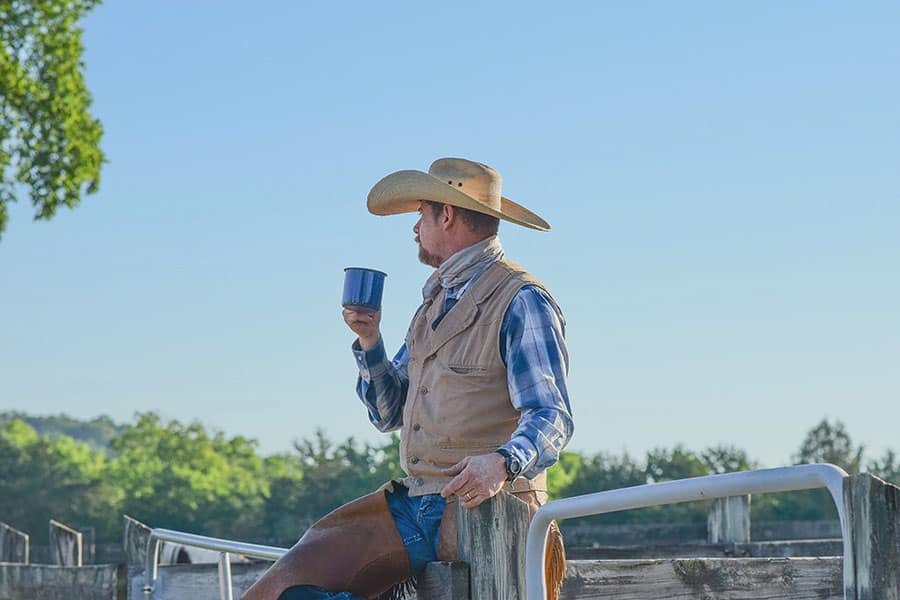
Popular among campers, cowboy coffee is brewed directly in a pot over a fire or stove. It’s bold and rustic, with a bit of grit unless you’re careful.
What You’ll Need
- Coffee grounds (coarse grind, 1 tbsp per 5 oz water)
- Pot or kettle
- Water
- Spoon
- Mug
How to Make It
- Add 12–13 ounces of water per serving to a pot (extra accounts for evaporation).
- Bring to a boil, then remove from heat for 30 seconds to cool slightly.
- Stir in 1 tablespoon of coarse-ground coffee per 5 ounces of water.
- Let sit for 2 minutes, stir again, then wait 2–3 more minutes for grounds to settle.
- Slowly pour into your mug, stopping before grounds spill over.
Tips
- Coarse grounds settle better than fine ones.
- Add a splash of cold water to speed up settling.
- Perfect for camping but expect some sediment.
5. The Microwave Method
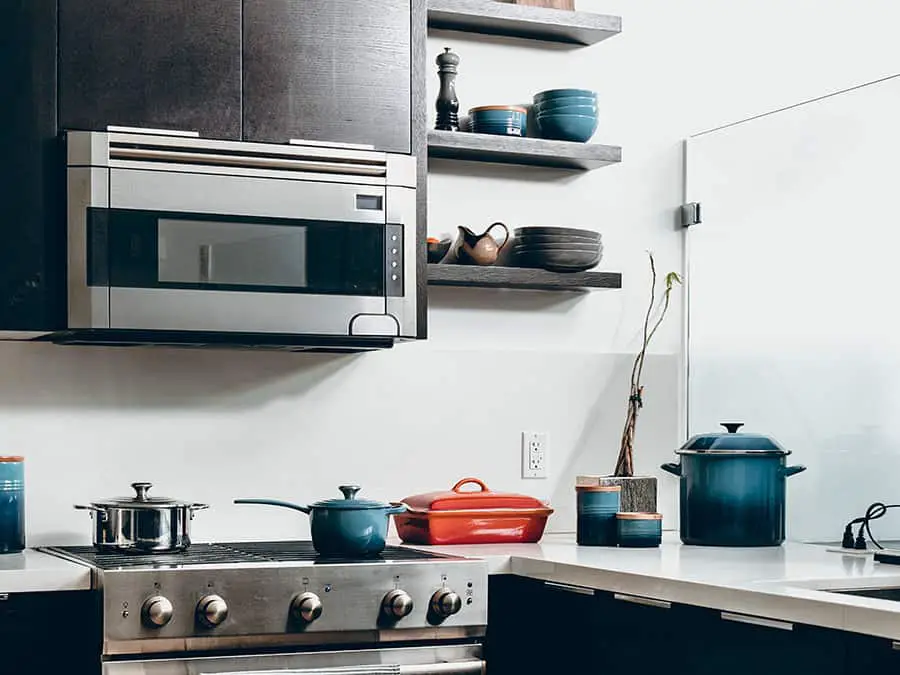
This is the quickest method for desperate times, but it’s best with instant coffee, not ground coffee, due to the lack of filtration.
What You’ll Need
- Instant coffee (1–2 tsp per 6 oz water)
- Water
- Mug
- Microwave
- Spoon
How to Make It
- Fill a mug with 6 ounces of water.
- Microwave for 1–2 minutes until hot but not boiling (check to avoid overflow).
- Stir in 1–2 teaspoons of instant coffee until dissolved.
- Let sit for 30 seconds and drink.
Tips
- Use high-quality instant coffee (e.g., from specialty brands) for better flavor.
- Don’t use ground coffee here—it’ll be gritty and unfiltered.
- Adjust coffee amount for strength.
6. The Faux French Press Method
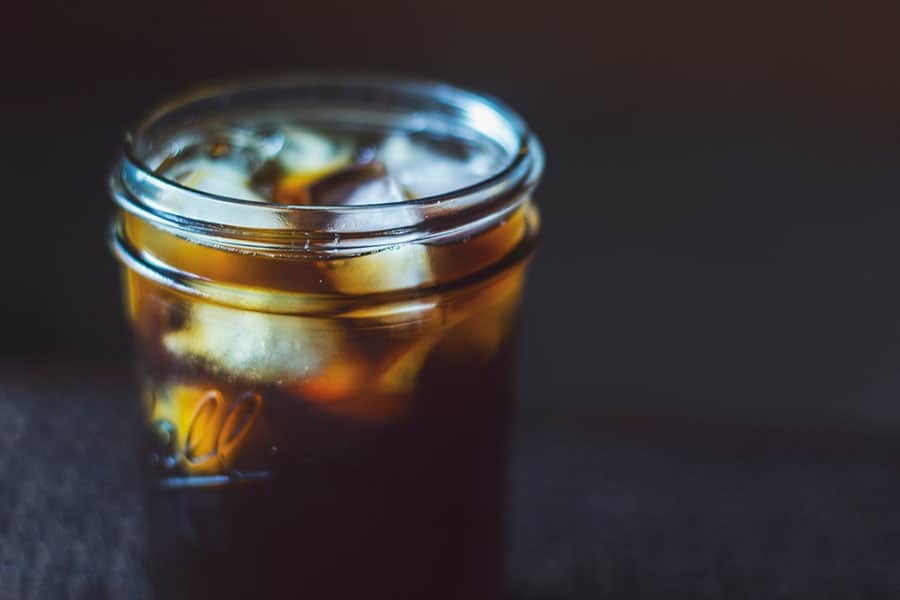
This mimics a French press using a mason jar or deep bowl. It’s great for a full-bodied brew without specialized equipment.
What You’ll Need
- Coffee grounds (coarse grind, 2 tbsp per 6 oz water)
- Mason jar or deep bowl
- Hot water
- Spoon
- Mug
How to Make It
- Add 2 tablespoons of coarse-ground coffee to the jar or bowl.
- Pour in a splash of hot water (195–205°F) to bloom the coffee; wait 30 seconds.
- Add 6 ounces of hot water per serving and stir.
- Let steep for 4 minutes.
- Press grounds to the bottom with a spoon while slowly pouring into your mug.
Tips
- Use a coarse grind to avoid a muddy brew.
- Pour carefully to keep grounds out of your cup.
- A strainer can help if grounds float.
7. The Handkerchief Method
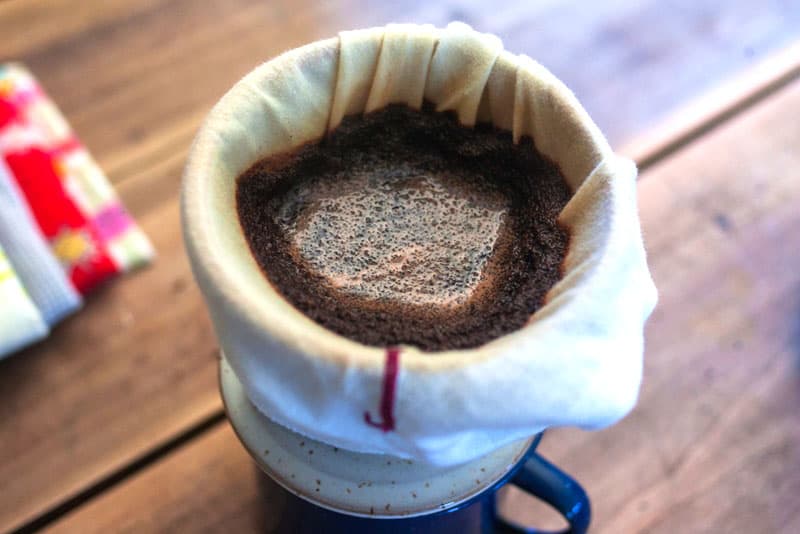
This is a DIY pour-over using a clean cloth like a handkerchief. It’s eco-friendly and effective for a clean cup.
What You’ll Need
- Coffee grounds (medium grind, 2 tbsp per 6 oz water)
- Clean handkerchief or cotton cloth
- Clothespins or clips
- Mug
- Hot water
How to Make It
- Drape a clean handkerchief over your mug, creating a pouch in the center.
- Secure with clothespins or clips to hold it in place.
- Add 2 tablespoons of coffee grounds to the pouch.
- Pour a small amount of hot water (195–205°F) to saturate grounds; wait 30 seconds.
- Slowly pour in 6 ounces of water, keeping the cloth steady.
- Remove the cloth and grounds, then drink.
Tips
- Use a clean, lint-free cloth to avoid odd flavors.
- Adjust pour speed to control strength.
- This method overlaps with the Coffee Bag Method but uses the cloth as a filter over the mug.
8. The Turkish Coffee Method
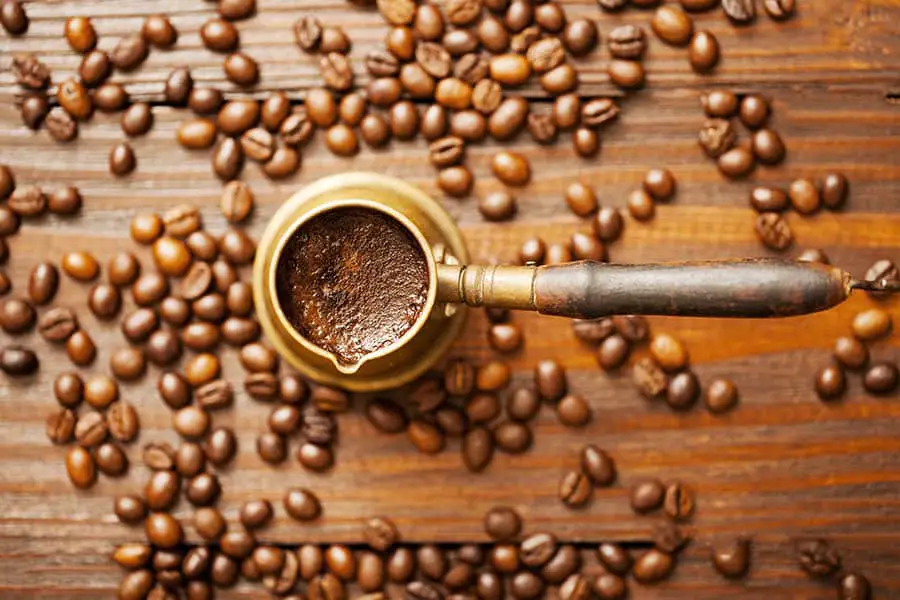
Turkish coffee is a cultural classic, using finely ground coffee boiled in a small pot (cezve). It’s strong, frothy, and unfiltered.
What You’ll Need
- Finely ground coffee (1 tsp per 3 oz water)
- Small pot or cezve
- Water
- Sugar or salt (optional)
- Small cup (espresso-sized)
- Spoon
How to Make It
- Add 3 ounces of cold water per serving to a small pot or cezve.
- Add 1 teaspoon of finely ground coffee and 1 teaspoon of sugar (if desired); don’t stir.
- Heat on low, stirring gently as it warms until foam forms.
- Just before boiling, remove from heat and skim foam into your cup.
- Return to heat until it nearly boils again, then pour half into the cup.
- Heat for 15 more seconds, then pour the rest, keeping foam intact.
- Let grounds settle for 1–2 minutes before sipping.
Tips
- Use a cezve for authenticity, but any small pot works.
- Don’t stir after pouring to keep grounds settled.
- Expect a strong, sediment-heavy brew.
Comparison Table: Which Method Suits You?
| Method | Tools Needed | Grind Size | Time | Cleanliness | Best For |
|---|---|---|---|---|---|
| Coffee Bag | Filter, string, mug | Medium-fine | 5 min | Clean | Quick single servings |
| Strainer | Strainer, saucepan, mug | Medium | 7 min | Clean | Multiple cups, home use |
| Saucepan | Saucepan, mug, spoon | Medium | 8 min | Gritty | Simple, no-filter setups |
| Cowboy | Pot, mug, spoon | Coarse | 8 min | Gritty | Camping, outdoor brewing |
| Microwave | Mug, instant coffee, microwave | N/A | 3 min | Clean | Desperate times, instant coffee |
| Faux French Press | Jar/bowl, spoon, mug | Coarse | 6 min | Slightly gritty | Full-bodied coffee, home/camping |
| Handkerchief | Cloth, clips, mug | Medium | 6 min | Clean | Eco-friendly, clean brews |
| Turkish | Small pot, small cup | Very fine | 5 min | Gritty | Strong, cultural experience |
Tips for Better Coffee Without a Machine
- Grind fresh: Freshly ground beans taste better. If you don’t have a grinder, buy small batches of pre-ground coffee with a recent roast date.
- Water temperature: Aim for 195–205°F. Boiling water (212°F) can scorch coffee, making it bitter. Let boiled water sit for 30 seconds before using.
- Ratio matters: A standard ratio is 2 tablespoons of coffee per 6 ounces of water. Adjust for stronger or weaker brews.
- Clean tools: Wash mugs, pots, and cloths thoroughly to avoid stale coffee flavors.
- Experiment: Each method offers a different flavor profile. Try them all to find your favorite.
Final Thoughts
Brewing coffee without a coffee maker is not only possible but also a chance to get creative. From the rustic Cowboy Method to the elegant Turkish style, these eight methods cover every scenario—whether you’re at home, camping, or in a pinch. Each has its charm, and with a little practice, you’ll be brewing coffee that rivals your local café. So, grab some grounds, heat some water, and make your morning cup happen, no machine required.

